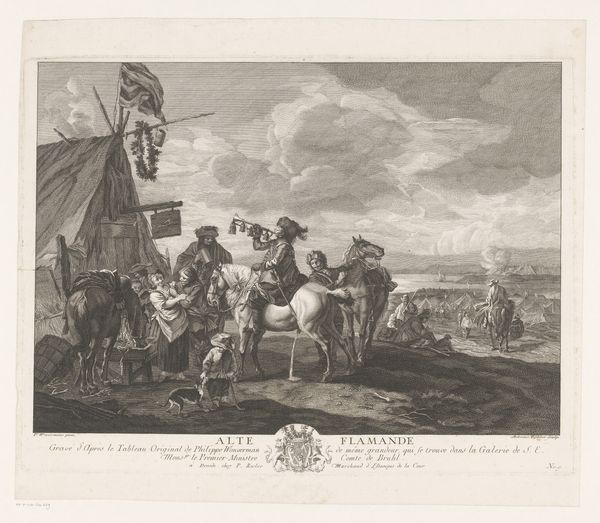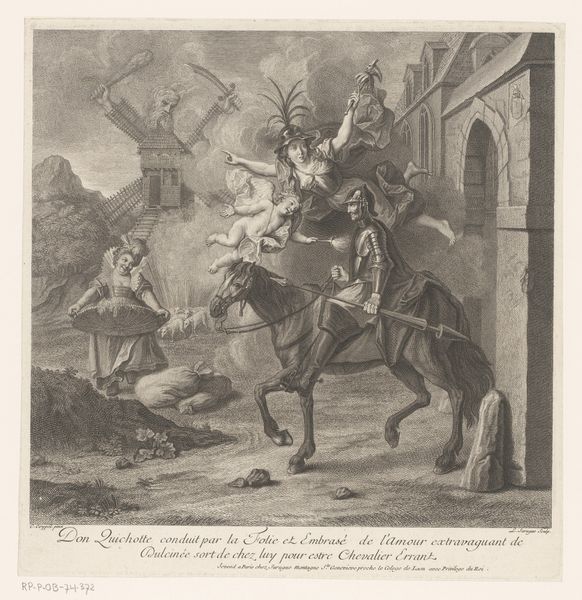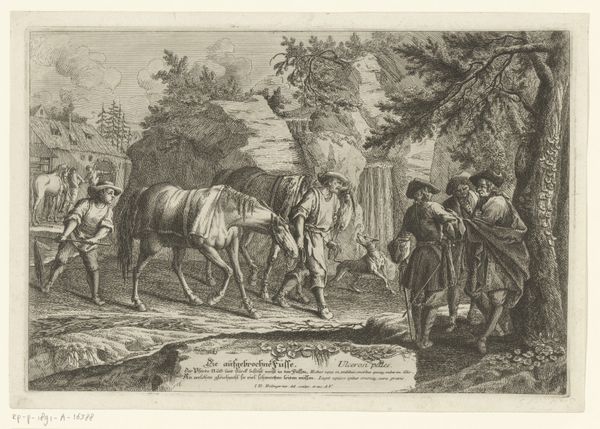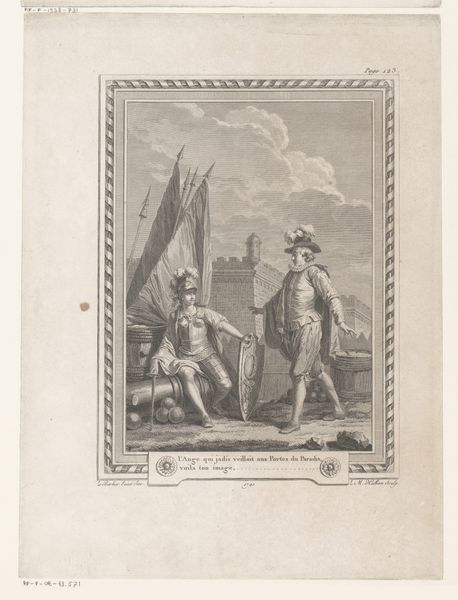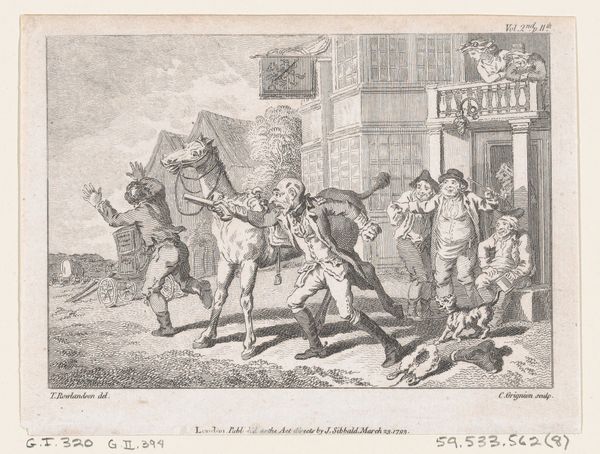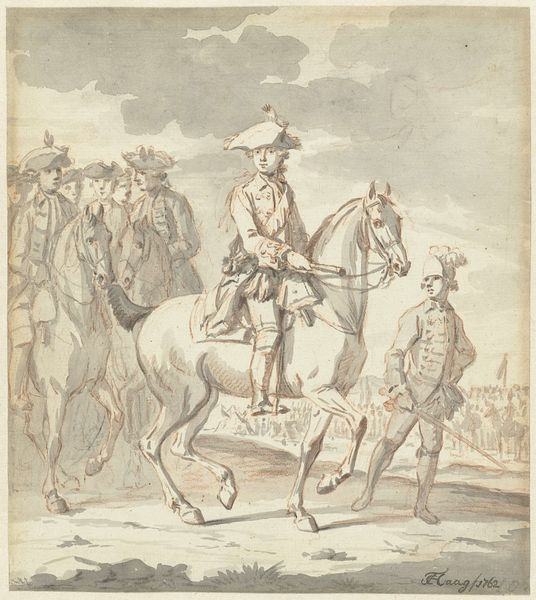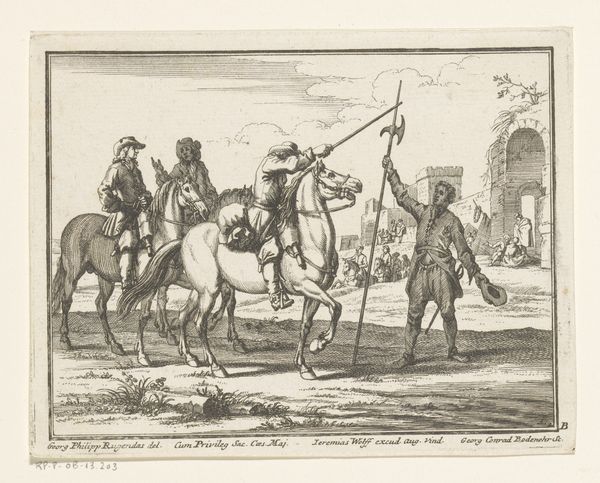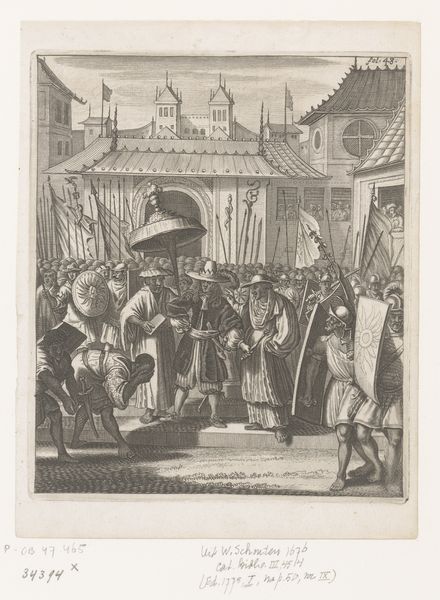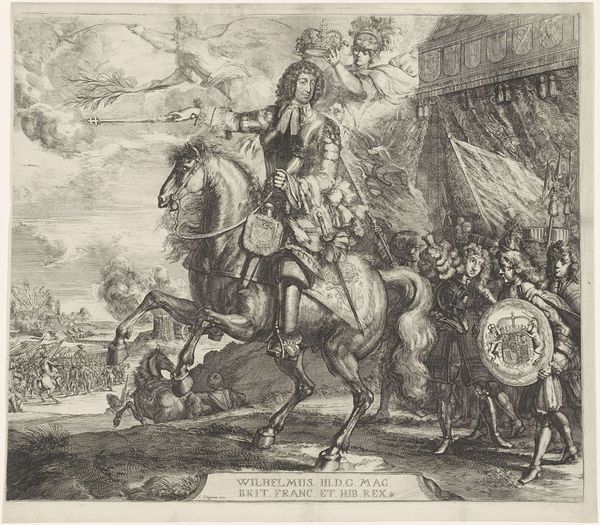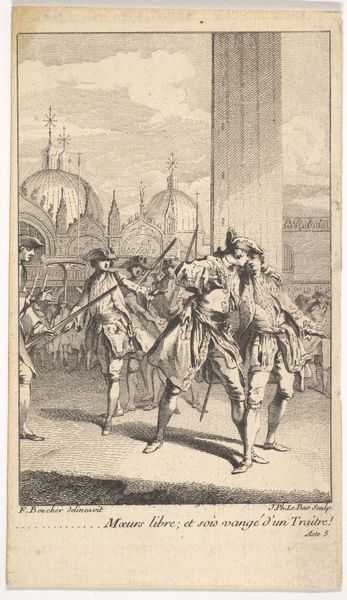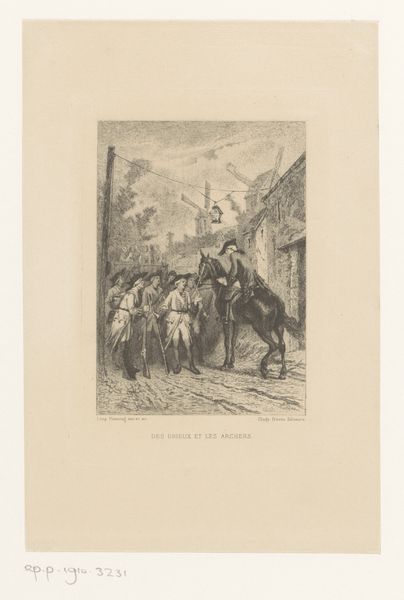
print, engraving
#
narrative-art
#
baroque
# print
#
old engraving style
#
figuration
#
line
#
genre-painting
#
history-painting
#
engraving
Dimensions: height 319 mm, width 297 mm
Copyright: Rijks Museum: Open Domain
Curator: Ah, the infamous knight himself! Here we have "Don Quixote tied to a window," an engraving by François Joullain, dating back to around 1723-1724. What do you make of this scene? Editor: A comical chaos! The composition alone pulls me in different directions – Don Quixote precariously stuck, the bewildered onlookers, and those regal figures on horseback observing it all. It's got the makings of a wonderfully absurd tableau. Curator: Absolutely. It's one of a series illustrating scenes from Cervantes' "Don Quixote." This one captures a rather unfortunate moment. The humor is derived from the gap between Quixote’s grandiose self-image and the humiliating reality of his misadventures. Editor: I’m curious about the window itself, or rather, what it represents. Windows, architecturally and symbolically, provide both outlook and enclosure. Is it perhaps hinting at Don Quixote's confinement to his own distorted fantasies, or his misguided chivalry barring his vision of reality? Curator: That’s insightful. The bars reinforce this idea of entrapment. This particular episode in the novel involves a prank by a serving girl, Maritornes. The situation reflects a broader theme in Quixote; his inability to distinguish fantasy from reality, which leads to him becoming a figure of ridicule. Editor: The man is wearing full plate armor, yet in a moment of peril he brandishes a lance—in what could have served a grand battle now appears rather foolish. Armor traditionally represents protection, but here it seems to add to his vulnerability. Is this an exploration of vulnerability through the lens of satire, poking fun at ideals gone awry? Curator: Precisely. Joullain cleverly uses the detailed lines of the engraving to highlight the contrast between Quixote's heroic aspirations and his pathetic predicament. His clinging hands, desperate expression. The artist understood that true comedy often springs from highlighting the inherent pathos within a character. Editor: This engraving seems to explore the cultural weight and enduring legacy of the Don Quixote figure, but does the old engraving style, typical of its era, evoke a sense of nostalgia? Does the artist romanticize this scene, or is the old-fashioned execution merely for accuracy and context? Curator: Interesting question. While the technique reflects its time, it serves to frame Don Quixote within a specific cultural understanding of heroism and folly. The printmaking emphasizes clarity but also offers a bit of distance—allowing us to appreciate the humor and the complexity of Quixote’s character from a safe remove. Editor: The piece made me reflect on how our symbols and heroes evolve. An image like this reflects how history has judged its past. Thanks for revealing those narrative layers. Curator: And thank you for unlocking those insightful perspectives on cultural symbolism; there's always a story within a story to find when you look closer.
Comments
No comments
Be the first to comment and join the conversation on the ultimate creative platform.
